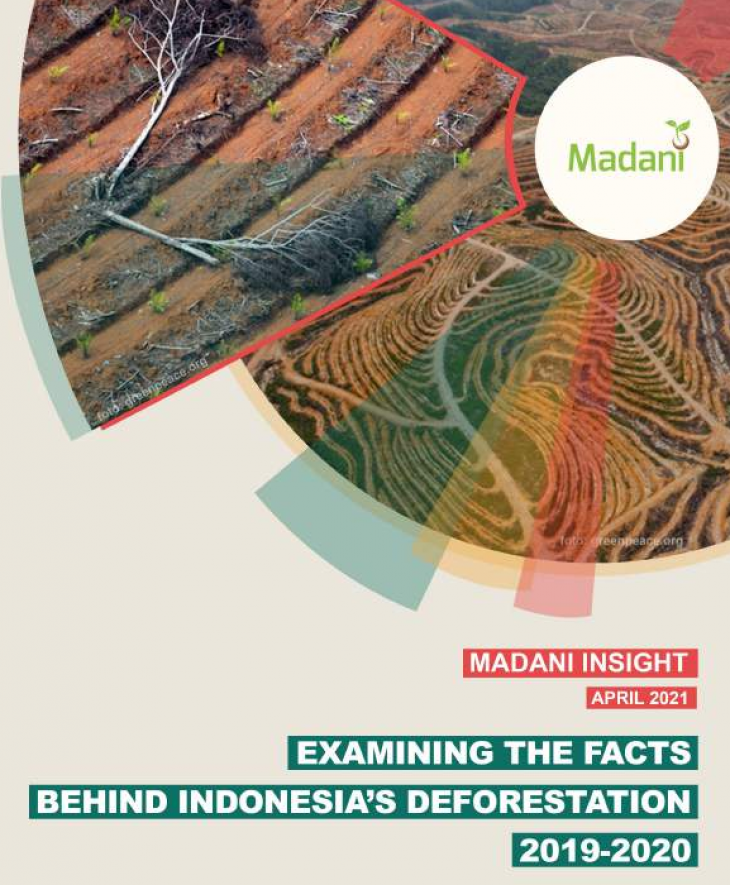
In March 2021, the Indonesian government released Indonesia’s latest deforestation figures (2019-2020) and announced the largest reduction in deforestation in history by 75%. The reduction in deforestation received international applause because it portrays a positive trend amid the increasing rate of forests losses globally.
This April edition of Madani Insight aims to increase public understanding of Indonesia’s recently announced deforestation figures and its meaning for the achievement of Indonesia’s climate commitment (NDC) and the Paris Agreement targets to keep the Earth’s temperature rise at 1.5 degrees Celsius.
This paper is divided into three parts. The first part examines Indonesia’s deforestation figures and where deforestation has occurred the most, including within the permitted or concession areas. The second part examines the extent of Indonesia’s natural forests that have not been protected and are therefore vulnerable to deforestation. The third part examines the meaning of Indonesia’s declining deforestation from the perspective of achieving both the climate commitments and target of the Paris Agreement.
DEFINITIONS
In order to understand the meaning of Indonesia’s deforestation figures, it is crucial to understand various definitions of deforestation used by the Government of Indonesia as described below.
- Deforestation: Changes in land cover conditions from Forest (forested) land cover class to Non-Forest (non-forested) category of land cover class.
- Forest: Land cover conditions in the form of primary dryland forests, secondary dryland forests, primary swamp forests, secondary swamp forests, primary mangrove forests, secondary mangrove forests, and timber plantations (plantation forests).
- Non-Forest: Forms of land covers which take form in shrubs/thickets, marsh scrubs, savanna/grasslands, plantations, dryland agricultures, dryland agriculture mixed with shrubs, transmigration, rice fields, embankments, open land, mining, settlements, swamps, and air/sea- ports.
- Net Deforestation: Change/reduction of forested land cover area in a certain period, obtained by deducting gross deforestation (deforestasi bruto) with reforestation figures.
- Reforestation: A change in land cover condition from a non-forest category land cover class (non-forested) to forest category land cover class (forested).
- Gross Deforestation (Deforestsi Bruto): Change in land cover condition, from forest category/land cover class to non-forest category land cover class without consideration of reforestation taken place.
- Gross Deforestation of Natural Forests: Change in land cover condition from natural forest cover class to non-natural forest category. Gross Deforestation of Natural Forest is used to separate changes in land cover conditions, from forest land cover class into non-forest land cover class, that is not caused by the harvesting of timber plantation (plantation forest).
This paper will focus on gross deforestation or deforestation of natural forests which are crucial for maintaining global climate stability, preserving biodiversity, and most relevant to efforts to achieve Indonesia’s climate commitments.
